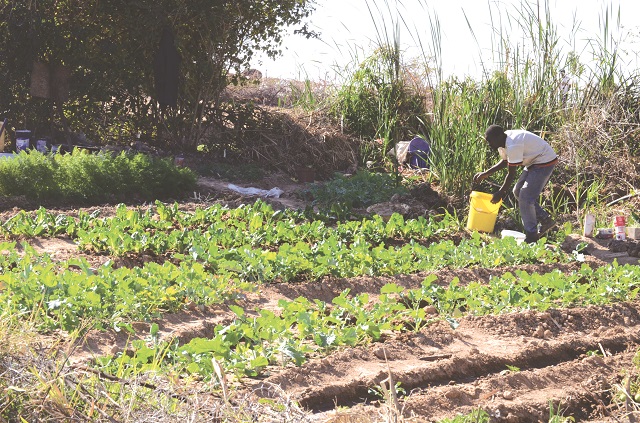
The Sunday News

Mhlupheki Dube
THE rains have started coming down, albeit with a patch distribution across our region in Matabeleland. We are, however, optimistic that in the coming days, the region will not only see an improved coverage in terms of distribution but also precipitation amounts. Very soon we will be full throttle into the farming season.
It is a season which comes with a lot of management challenges for livestock farmers especially regarding animal health issues.
Wet conditions naturally come with a proliferation in disease causing pathogens and invariably an increase in animal disease incidences. This is the season when farmers experience a lot of livestock mortality due to diseases.
The import of our discussion therefore, is managing animals for low mortality rates. The first category of your animals that farmers should target to protect from mortality are the calves and kids. Kid mortality in goats contributes significantly to low organic growth of the flock.
Most goat producers will tell you that most of their losses come through high rates of kid mortality. They usually lose goats when they are just about to reach weaning age.
Kid mortality is primarily as result of two major causes, that is predation and diseases. Predation as a result of mostly jackals and diseases is usually pulpy kidney. The call therefore, is for goat farmers to improve their management practices with a singular aim of reducing mortality in goats in general and goat kids in particular.
There is nothing as painful to a farmer as losing kids or calves as this does not only mean you have lost a whole year of waiting in calves, but you have also lost a source of income as this means you have reduced the number of animals you will sell in that particular year by one.
I have said it several times here that calves born and raised to maturity define your off-take, that is the number of animals you will sell in that particular year.
This is your income from the enterprise and hence a loss of the calf and even kid means that you are one animal less to sell that particular year and this is not a good think for the farmer.
Personally as a farmer I am more outraged when I lose a calf than a bigger animal. A calf, especially a female one, has a whole lot of production years ahead yet an older animal could have been on its production twilight.
It is therefore, imperative for livestock farmers to adopt and practice all the good animal husbandry practices so that they reduce calf and kid mortality in their animals.
This means providing an appropriate housing for your calves and kids so that they are protected from both harsh weather conditions and predation.
In areas with a lot of predators such as hyenas, farmers have recorded livestock losses especially goats from attacks by hyenas in kraals. Therefore, the housing needs to be protected enough to prevent predators from attacking animals in the kraal.
The housing especially for goats needs to be such that it does not promote damp conditions as this may cause diseases to your goats such as foot rot. Suddenly you have half of your flock of goats limping on three legs because they have an infection which is coming from an inappropriate housing.
Pulpy kidney vaccination is an extremely important management practice for goat producers. I know that most smallholder livestock farmers are averse to vaccination as an animal health management practice but those in goat production will attest to the fact that vaccinating your goats against pulpy kidney makes a big difference between incurring huge kid losses and not!
Kraaling animals for the night is a very important management practice that livestock farmers take lightly but this can make all the difference between losing that calf or kid and seeing it to maturity.
Farmers need to be reminded that most predators that attack our animals are nocturnal which means they are active at night and your animal will not stand a chance with these predators if it’s left out in the rangeland at night.
Finally I implore farmers to always have in their veterinary kits, drugs such as your oxytetracyclines and your penicillin-based ones for immediate action when need arises. Disease progression can be so fast at times that it will not give you enough time to wait for someone to send the drug from town.
You would need to act and inject the sick animal immediately to allow for treatment. Let’s all aim for no calf or kid mortality and we will be very happy farmers as we see our herds grow.
Uyabonga umntakaMaKhumalo. Mhlupheki Dube is a livestock specialist and farmer. He writes in his own capacity.
Feedback [email protected]/cell 0772851275



